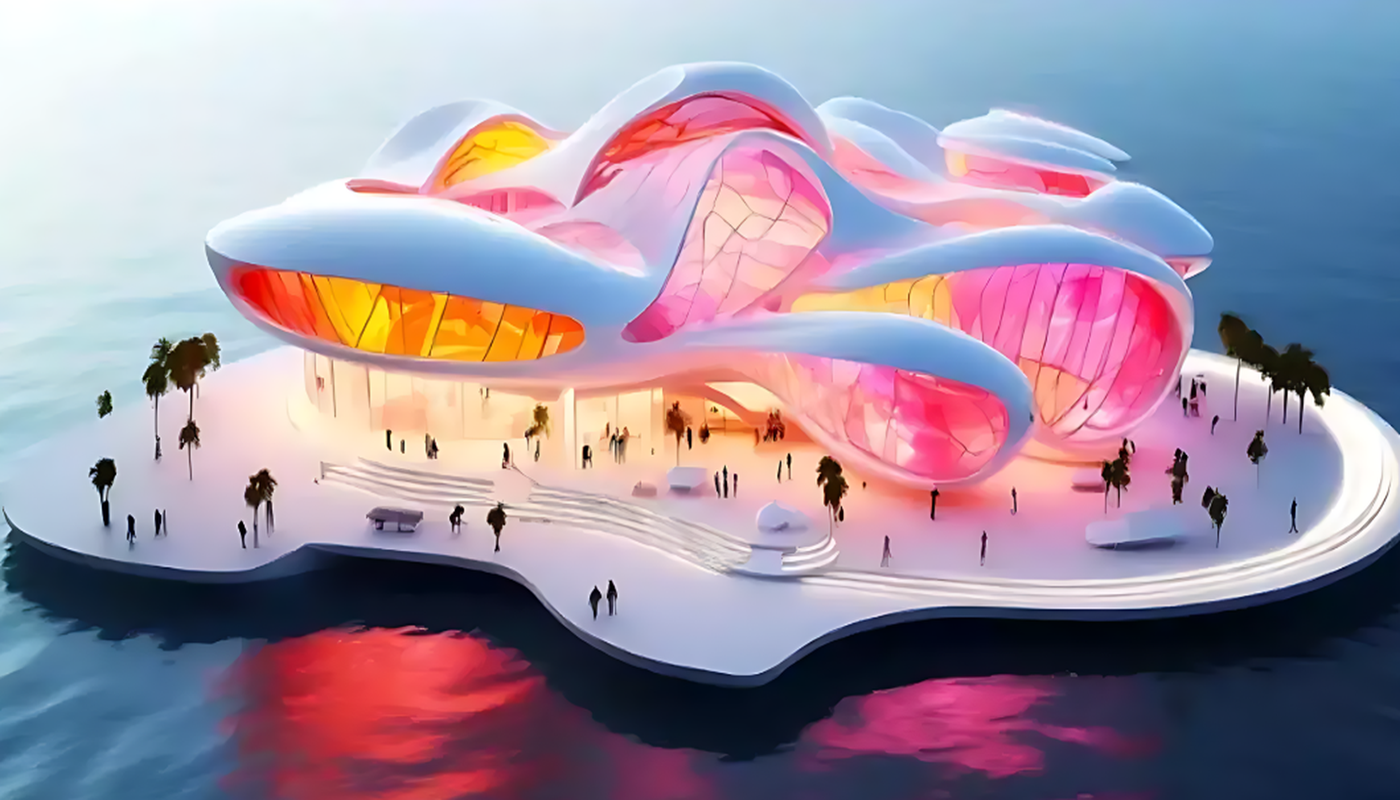The Floating Glass Museum designed by Luca Curci Architects is a groundbreaking project where the boundaries between art and nature blur, and water becomes a canvas for contemporary expression. Conceived by an international team of architects and designers with the support of artificial intelligence, this museum represents a unique fusion of tradition, innovation, and sustainability.

Concept and Inspiration
The Floating Glass Museum draws inspiration from the rich cultural heritage of Venice and the intricate craft of glassmaking. It seamlessly blends tradition with cutting-edge design, emphasizing sustainability through meticulous material research and attention to the surroundings.
The project aims to raise awareness about climate change by creating a sanctuary where the history of glass meets contemporary experimentation. Visitors will encounter a curated display of paintings, glass art installations, and mid-century modern furniture within the 3,800-square-foot space.
Architectural Marvel:
Externally, renderings of the museum showcase an architectural masterpiece. The structure utilizes a spectrum of glass hues, ranging from pink to orange, reminiscent of undulating hills. The museum’s design harmoniously integrates with its natural surroundings, blurring the boundaries between art and nature. It invites contemplation, reflection, and discovery.
Global Initiative:
The Floating Glass Museum represents a global initiative, symbolizing environmental awareness. It will make its rounds in major cities worldwide that grapple with the impacts of climate change, including Dubai, New York, Hong Kong, Singapore, and Busan. By showcasing the museum in these cities, Luca Curci Architects aims to emphasize the pressing issue of sea level rise and its correlation with climate change.
Climate Change Urgency:
Climate change affects every corner of the globe. It is disrupting economies, ecosystems, and communities. Shifting weather patterns, rising sea levels, and extreme weather events necessitate urgent action. Scientists project that by 2100, sea levels could rise by at least a foot (0.3 meters) to as high as 8 feet (2.4 meters) if carbon emissions persist at current rates.
Previous Projects:
In 2019, Luca Curci Architects showcased the ‘Vertical City – Zero-Energy City-Building’ project at the Knowledge Summit in Dubai. This visionary concept aimed at sustainable urban living. In 2020, they planned about ‘THE LINK City-Forest’, a smart city designed to accommodate 200,000 people with a conscious orientation towards sustainability.
Leave a Reply